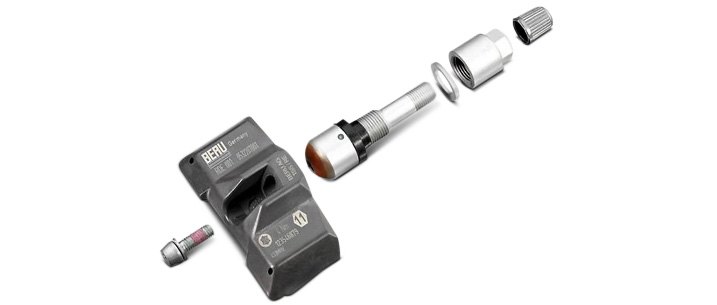
In the United States, TPMS is mandatory for all vehicles produced after September 2007. TPMS is an acronym for Tire Pressure Monitoring System. This system is designed to alert the driver when one of their tires is underinflated by 25% of the factory specification.
You may be asking yourself why is the government getting involved in how much air is in the tires on our cars. The answer is simple for those of us who can recall the problems that ford had in the early 90’s with their Explorer. The SUV had a propensity to roll when preforming emergency maneuvers. Instead of redesigning the suspension system to correct the problem ford decided to lower the tire pressure to 26psi so the tires could absorb some of roll instead to reduce the rollover problem the Explorer had. This helped with the rollover issue yet it created another problem for Ford and eventually for Firestone the maker of the tires. The lowered psi caused more resistance between the tire and road. This added resistance caused the tires to get to hot and blow out causing the roll overs ford was trying to avoid. This problem spurred the Govt to take action it was already debating about taking.

According to the GITI, for every 10% of under-inflation on each tire on a vehicle, a 1% reduction in fuel economy will occur. In the United States alone, the Department of Transportation estimates that under inflated tires waste 2 billion US gallons (7,600,000 m3) of fuel each year. Under inflated tires are the number one cause of tire failure and contribute to tire disintegration, heat buildup, ply separation and sidewall/casing breakdowns. Other reasons can cause sudden tire failure such as damage caused to the tire by hitting sharp curbs or pot holes as a good rate of speed. Under-inflated tires lead to tread separation and tire failure, resulting in 40,000 accidents, 33,000 injuries and over 650 deaths per year. Further, tires properly inflated add greater stability, handling and braking efficiencies and provide greater safety for the driver, the vehicle, the loads and others on the road. Under-inflated tires, as estimated by the US Department of Transportation, release over 26 billion kilograms (57.5 billion pounds) of unnecessary carbon-monoxide pollutants into the atmosphere each year in the United States alone. The added resistance from under inflated tires makes a large impact nationwide. Those reasons added along with public safety led to the TREAD act of 2000.

The tire pressure monitor mounts inside the rim. A vast majority of these sensors are part of the valve stem. It mounts inside the tire and has a sensor to monitor the pressure of the air in the tire. Each sensor has a battery in it that powers the sensor to monitor tire pressure as well as send out a radio signal so that the car can receive the information and inform the driver of any loss of tire pressure. The other type of TPMS sensor is a band style sensor. The band style sensor is held to the center of the rim with a large clamp that clamps the sensor down to the center of the rim.

The TPMS light will come on if the tire pressure is under or over inflated. The light will also come on if there are communication problems with the system. Most communication issues are due to sensor failure. The primary reason for sensor failure is the internal battery failing or years of vibration from being mounted in the tire. Either way if your sensor has failed it will need to be replaced by removing the tire form the wheel and removing and installing a new sensor. Like most waring lights this is not one you want to ignore. Most of the time it is a simple fix. If you are trying to adjust the tire pressure, make sure to look on the driver side door jamb for informational sticker. This sticker will have the factory tire size on it as well as the recommended tire pressure specifications. Those are the pressure specs you will want to use when setting your tire pressure. In proper tire inflation can cause tracking issues when going down the road and cause your car to pull to one side or the other
If your TPMS light is on or you would like your tire pressure checked stop by any of our locations. If you are in Grass Valley stop by and see Bryan and if you are in Nevada City stop and see Jeff.



